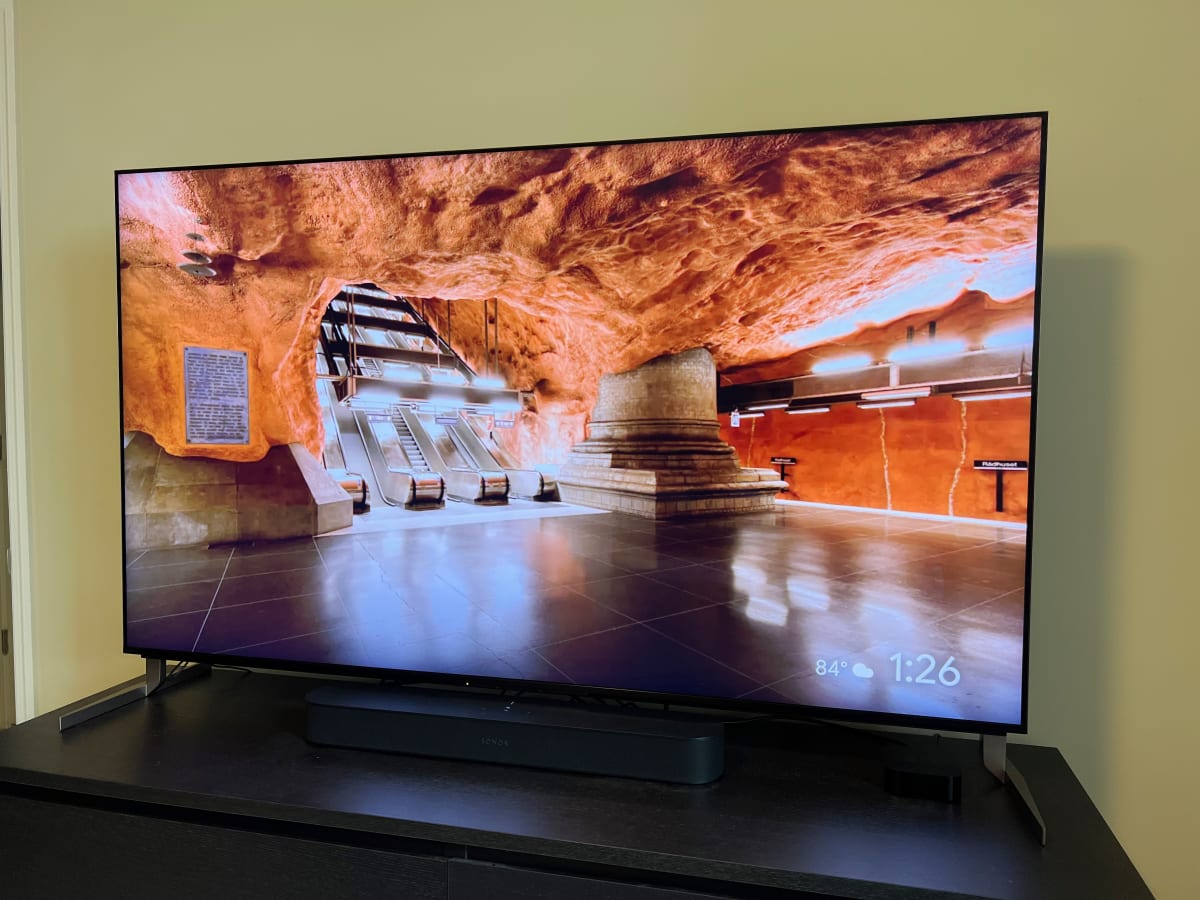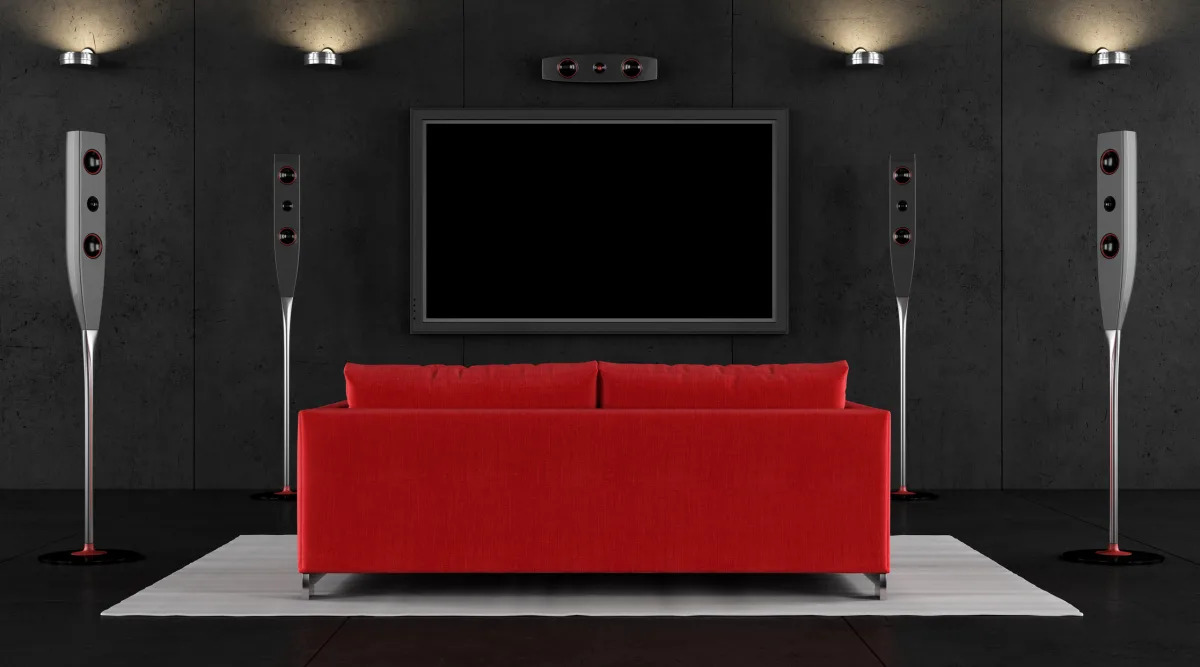Introduction
In an era where smartphones and smart home devices have become integral parts of our daily lives, the concept of controlling various appliances with a single device has gained significant traction. This is where the often overlooked yet powerful technology of Infrared (IR) blasters comes into play. IR blasters are small, yet mighty components integrated into many modern devices, enabling them to communicate with and control a wide array of electronics, from TVs and set-top boxes to air conditioners and even some home appliances.
The capabilities of IR blasters are not limited to just controlling entertainment systems; they can also be harnessed to manage smart home devices, making them a versatile and valuable tool in the realm of home automation. Understanding the functionalities and potential uses of IR blasters can empower individuals to streamline their daily routines, enhance convenience, and optimize the management of various electronic devices.
As we delve deeper into the world of IR blasters, we will unravel the mechanisms behind their operation, explore the diverse range of devices that utilize this technology, and uncover the myriad benefits they offer. Additionally, we will provide practical tips for maximizing the potential of IR blasters, enabling users to harness the full extent of their capabilities. By the end of this insightful exploration, you will gain a comprehensive understanding of IR blasters and their potential to revolutionize the way we interact with our electronic devices.
What is an IR Blaster?
An IR blaster, short for infrared blaster, is a small yet powerful component integrated into various electronic devices, enabling them to transmit infrared signals. These signals are used to control and communicate with other devices that are equipped to receive and interpret them. Essentially, an IR blaster serves as a bridge between the controlling device, such as a smartphone or a smart home hub, and the target electronic equipment, allowing for seamless remote operation.
The functionality of an IR blaster is akin to that of a remote control, albeit with the added convenience of being integrated into a single, multifunctional device. By harnessing the power of infrared technology, an IR blaster can replicate the signals typically emitted by traditional remote controls, effectively enabling users to remotely command and manage a diverse range of electronic appliances and gadgets.
In essence, an IR blaster acts as a universal translator, converting the digital commands from a controlling device into infrared signals that are understood by the targeted electronic devices. This capability empowers users to consolidate the control of multiple devices into a single interface, simplifying the management of various electronics and enhancing overall convenience.
The compact size and versatility of IR blasters make them an invaluable addition to modern devices, contributing to the seamless integration of smart home systems and the convergence of entertainment and home automation. As the technological landscape continues to evolve, the significance of IR blasters in enabling device interoperability and enhancing user experience cannot be overstated.
How Does an IR Blaster Work?
An IR blaster operates by emitting infrared signals, which are invisible to the human eye but can be detected and interpreted by compatible electronic devices. When a user initiates a command on a controlling device, such as a smartphone or a smart home hub, the IR blaster translates the digital instructions into a series of infrared signals. These signals are then transmitted in the direction of the target device, effectively replicating the functionality of a traditional remote control.
The process of transmitting infrared signals involves a sequence of pulses and modulations that convey specific commands to the receiving device. Each command, such as adjusting the volume on a television or changing the temperature on an air conditioner, is encoded into a unique pattern of pulses, which are emitted by the IR blaster in rapid succession. Upon reaching the target device, the infrared signals are captured by its built-in IR receiver, where they are decoded and translated into actionable commands that correspond to the user's input.
The effectiveness of an IR blaster hinges on its ability to emit precise and accurately modulated infrared signals, ensuring seamless communication with a diverse range of electronic appliances. This capability enables users to control multiple devices from a centralized interface, eliminating the need for separate remote controls and streamlining the management of various electronics.
Furthermore, the integration of IR blasters into smartphones and smart home hubs has expanded the scope of their functionality, allowing users to transform their personal devices into universal remotes. This convergence of technology empowers individuals to effortlessly interact with their entertainment systems, climate control devices, and other electronics, all from a single, portable interface.
As the demand for interconnected smart home solutions continues to grow, the role of IR blasters in facilitating seamless communication between devices has become increasingly pivotal. By harnessing the power of infrared technology, IR blasters play a crucial role in enabling the convergence of entertainment, home automation, and smart living, ultimately enhancing user convenience and enriching the overall digital experience.
Devices that Use IR Blasters
IR blasters are integrated into a wide array of electronic devices, expanding their functionality and enabling seamless remote control capabilities. These devices encompass a diverse spectrum of consumer electronics and smart home appliances, showcasing the versatility and ubiquity of IR blaster technology. Understanding the range of devices that leverage IR blasters is essential for comprehending the scope of their impact on modern living.
-
Smartphones: Many smartphones are equipped with IR blasters, allowing users to transform their devices into universal remotes. This integration empowers individuals to control TVs, set-top boxes, and other entertainment systems directly from their smartphones, consolidating the management of various devices into a single, portable interface.
-
Smart TVs and Set-Top Boxes: Smart TVs and set-top boxes often feature built-in IR blasters to receive and interpret remote control commands. This integration enables users to effortlessly navigate channels, adjust volume, and access smart TV functionalities using a centralized remote control interface.
-
Home Entertainment Systems: IR blasters are commonly found in home entertainment systems, including audio-visual receivers, soundbars, and media players. By harnessing the capabilities of IR blasters, users can seamlessly control their entire entertainment setup, creating a cohesive and immersive viewing and listening experience.
-
Air Conditioners and Climate Control Devices: Many air conditioners and climate control devices are compatible with IR blasters, allowing users to adjust temperature settings and fan speeds remotely. This functionality enhances convenience and enables users to create personalized and comfortable living environments.
-
Home Appliances: Certain smart home appliances, such as robotic vacuum cleaners and smart kitchen gadgets, integrate IR blasters to facilitate remote operation and management. This integration contributes to the seamless automation of household tasks, streamlining daily routines and enhancing overall efficiency.
-
Gaming Consoles: Some gaming consoles utilize IR blasters to receive signals from remote controls or other controlling devices. This integration enhances the gaming experience by enabling users to interact with their consoles from a distance, without the need for direct line-of-sight communication.
-
Smart Home Hubs and Controllers: Smart home hubs and controllers often incorporate IR blasters to communicate with and manage a wide range of compatible devices, including TVs, audio systems, and smart home appliances. This centralized control mechanism simplifies the management of interconnected smart home ecosystems, fostering a cohesive and integrated living environment.
The widespread integration of IR blasters into these devices underscores their pivotal role in enabling seamless communication and remote control functionalities across diverse electronic appliances and smart home systems. By understanding the breadth of devices that leverage IR blaster technology, users can fully appreciate the convenience and versatility that these components bring to their daily lives.
Functions of IR Blasters
IR blasters serve a multitude of functions that contribute to the seamless management and control of electronic devices. These functions extend beyond traditional remote control capabilities, encompassing a diverse range of operations that enhance user convenience and streamline the interaction with various appliances and gadgets.
1. Remote Control Emulation:
One of the primary functions of IR blasters is to emulate the functionality of traditional remote controls. By transmitting precise and modulated infrared signals, IR blasters enable users to remotely command devices such as TVs, set-top boxes, audio systems, and air conditioners, replicating the actions typically performed with dedicated remote controls. This emulation capability consolidates the control of multiple devices into a single interface, simplifying the user experience and eliminating the need for separate remotes.
2. Device Interoperability:
IR blasters play a crucial role in fostering device interoperability within smart home ecosystems. By communicating with a wide array of electronic appliances and gadgets, including smart TVs, gaming consoles, and home automation devices, IR blasters facilitate seamless integration and interaction between disparate devices. This interoperability empowers users to create cohesive and interconnected living environments, where various devices can be controlled and managed through a centralized interface, enhancing overall convenience and user experience.
3. Smart Home Automation:
In the realm of smart home automation, IR blasters serve as integral components that enable the remote operation and management of smart home devices. From controlling smart lighting systems and automated window blinds to adjusting thermostat settings and managing robotic vacuum cleaners, IR blasters facilitate the seamless automation of household tasks, contributing to enhanced efficiency and personalized living experiences. This function aligns with the broader trend of integrating smart technologies into everyday living spaces, empowering users to optimize their home environments with minimal effort.
4. Entertainment System Control:
The capabilities of IR blasters extend to the comprehensive control of home entertainment systems, encompassing audio-visual receivers, soundbars, media players, and gaming consoles. By harnessing the functionality of IR blasters, users can effortlessly navigate through entertainment options, adjust audio settings, and interact with gaming consoles, creating immersive and tailored entertainment experiences. This function underscores the pivotal role of IR blasters in unifying and simplifying the management of diverse entertainment devices within a single ecosystem.
5. Enhanced User Experience:
Ultimately, the functions of IR blasters converge to enhance the overall user experience by providing a centralized and versatile control mechanism for a myriad of electronic devices. The seamless integration of IR blasters into smartphones, smart home hubs, and other devices empowers users to streamline their daily routines, personalize their living spaces, and interact with their electronics in a cohesive and intuitive manner. This enhanced user experience underscores the transformative impact of IR blasters in modern living environments, where convenience, efficiency, and interconnectedness are paramount.
The multifaceted functions of IR blasters underscore their significance in modern living, where the convergence of entertainment, home automation, and smart living is increasingly prevalent. By harnessing the diverse capabilities of IR blasters, users can elevate their interaction with electronic devices, creating tailored and connected living experiences that align with the evolving landscape of digital living.
Benefits of Using IR Blasters
The utilization of IR blasters yields a myriad of compelling benefits that significantly enhance the management of electronic devices and contribute to a seamless and integrated living experience. These benefits extend across various aspects of modern living, encompassing convenience, efficiency, and the convergence of entertainment and smart home technologies.
1. Consolidated Control
IR blasters empower users to consolidate the control of multiple electronic devices into a single, centralized interface. By integrating IR blasters into smartphones and smart home hubs, individuals can effortlessly command and manage TVs, set-top boxes, audio systems, and climate control devices from a portable and versatile platform. This consolidation eliminates the need for separate remote controls, streamlining the management of diverse appliances and gadgets.
2. Enhanced Convenience
The seamless remote control capabilities facilitated by IR blasters contribute to enhanced convenience in daily living. Users can adjust entertainment settings, regulate climate control devices, and initiate smart home automation tasks with ease, all from a unified interface. This level of convenience simplifies routine tasks, fosters personalized living experiences, and aligns with the evolving trend of integrated smart living solutions.
3. Interoperability
IR blasters play a pivotal role in fostering device interoperability within smart home ecosystems. By facilitating communication with a diverse range of electronic devices, including smart TVs, gaming consoles, and home automation systems, IR blasters enable the creation of cohesive and interconnected living environments. This interoperability empowers users to seamlessly integrate and manage disparate devices, contributing to a harmonized and streamlined living experience.
4. Personalized Automation
The integration of IR blasters into smart home setups enables personalized automation of household tasks, such as adjusting lighting, controlling robotic vacuum cleaners, and managing kitchen appliances. This personalized automation aligns with the broader trend of leveraging smart technologies to optimize living spaces, enhancing efficiency and enabling users to tailor their home environments to suit their preferences and lifestyle.
5. Streamlined Entertainment
IR blasters facilitate comprehensive control of home entertainment systems, allowing users to navigate through entertainment options, adjust audio-visual settings, and interact with gaming consoles from a centralized interface. This streamlined control mechanism enhances the entertainment experience, creating immersive and tailored viewing and gaming experiences that align with the evolving landscape of integrated entertainment solutions.
In essence, the benefits of using IR blasters extend beyond mere convenience, encompassing the convergence of entertainment, home automation, and personalized living experiences. By harnessing the capabilities of IR blasters, users can optimize their living spaces, streamline their daily routines, and interact with their electronic devices in a cohesive and intuitive manner, ultimately enhancing the overall quality of modern living.
Tips for Using IR Blasters
When leveraging the capabilities of IR blasters to control and manage electronic devices, implementing the following tips can optimize the user experience and enhance the seamless integration of remote control functionalities:
-
Positioning and Line of Sight: Ensure that the IR blaster on the controlling device, such as a smartphone or smart home hub, has an unobstructed line of sight to the target electronic device. This facilitates the transmission of infrared signals and enhances the reliability of remote control operations. Positioning the controlling device within the line of sight of the targeted appliances is pivotal for effective communication via IR blasters.
-
Customized Remote Profiles: Explore the option of creating customized remote control profiles within IR blaster-enabled applications. This feature allows users to tailor the control interface to specific devices, ensuring seamless and intuitive remote operation. By customizing remote profiles, users can optimize the functionality of IR blasters and streamline the management of diverse electronic appliances.
-
Integration with Smart Home Hubs: If utilizing IR blasters within a smart home ecosystem, consider integrating them with smart home hubs or controllers. This integration enables centralized management of multiple devices and enhances the interoperability of smart home solutions. By harnessing the capabilities of smart home hubs, users can create cohesive and interconnected living environments, leveraging IR blasters to streamline device control and automation.
-
Exploring Compatibility: When incorporating IR blasters into smart home setups, explore the compatibility of various electronic devices with IR blaster technology. Ensuring that the targeted appliances and gadgets are compatible with IR blasters facilitates seamless communication and enhances the overall effectiveness of remote control operations. Compatibility exploration is essential for optimizing the functionality and performance of IR blasters within smart living environments.
-
Regular Maintenance and Updates: Stay proactive in maintaining and updating the IR blaster-enabled devices and applications. Regular maintenance, including cleaning the IR blaster components and ensuring proper functionality, contributes to the reliability and longevity of remote control operations. Additionally, staying abreast of software updates and firmware enhancements for IR blaster-enabled applications can optimize performance and introduce new features for enhanced user experience.
By adhering to these tips for using IR blasters, individuals can maximize the potential of these components, streamline remote control operations, and foster a cohesive and intuitive approach to managing electronic devices within smart home environments. Embracing these best practices empowers users to fully leverage the capabilities of IR blasters, enhancing convenience, efficiency, and the overall quality of modern living experiences.
Conclusion
In conclusion, the pervasive integration of IR blasters into modern electronic devices has ushered in a new era of convenience, efficiency, and interconnected living experiences. The functionality and versatility of IR blasters extend far beyond traditional remote control capabilities, encompassing a diverse range of functions that empower users to streamline their daily routines, personalize their living spaces, and interact with their electronic devices in a cohesive and intuitive manner.
The seamless remote control capabilities facilitated by IR blasters have redefined the way users manage and interact with their electronic appliances, consolidating the control of multiple devices into a single, centralized interface. This consolidation eliminates the clutter of multiple remote controls, simplifies the user experience, and aligns with the evolving trend of integrated smart living solutions.
Furthermore, the interoperability fostered by IR blasters within smart home ecosystems has contributed to the creation of cohesive and interconnected living environments. By facilitating communication with a diverse range of electronic devices, including smart TVs, gaming consoles, and home automation systems, IR blasters have enabled users to seamlessly integrate and manage disparate devices, enhancing the overall convenience and user experience.
The personalized automation capabilities of IR blasters align with the broader trend of leveraging smart technologies to optimize living spaces, enhancing efficiency, and enabling users to tailor their home environments to suit their preferences and lifestyle. Additionally, the comprehensive control of home entertainment systems facilitated by IR blasters has created immersive and tailored viewing and gaming experiences, aligning with the evolving landscape of integrated entertainment solutions.
As the demand for interconnected smart home solutions continues to grow, the role of IR blasters in facilitating seamless communication between devices has become increasingly pivotal. By harnessing the power of infrared technology, IR blasters play a crucial role in enabling the convergence of entertainment, home automation, and smart living, ultimately enhancing user convenience and enriching the overall digital experience.
In essence, the transformative impact of IR blasters on modern living cannot be understated. These components have not only simplified the management of electronic devices but have also contributed to the seamless integration of entertainment and smart home technologies, fostering personalized living experiences and enhancing the overall quality of modern living.
By embracing the multifaceted capabilities of IR blasters and implementing best practices for their utilization, individuals can fully leverage the potential of these components, creating tailored and connected living experiences that align with the evolving landscape of digital living.

























